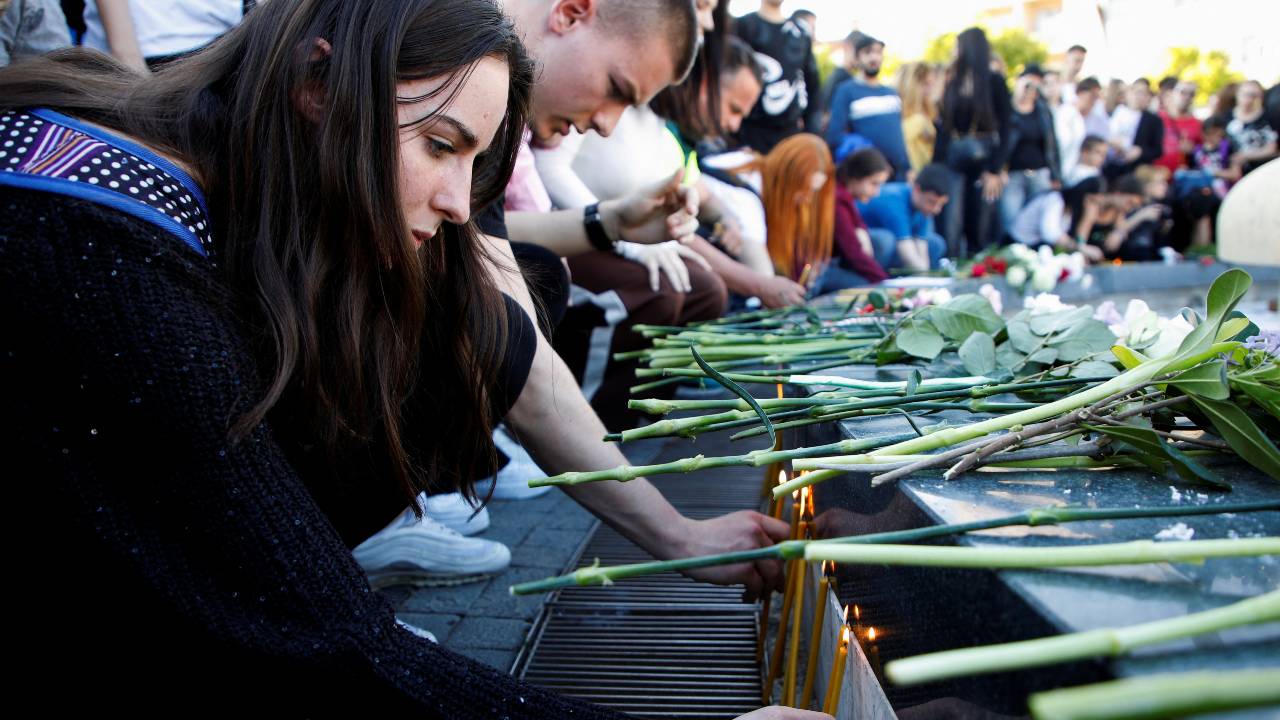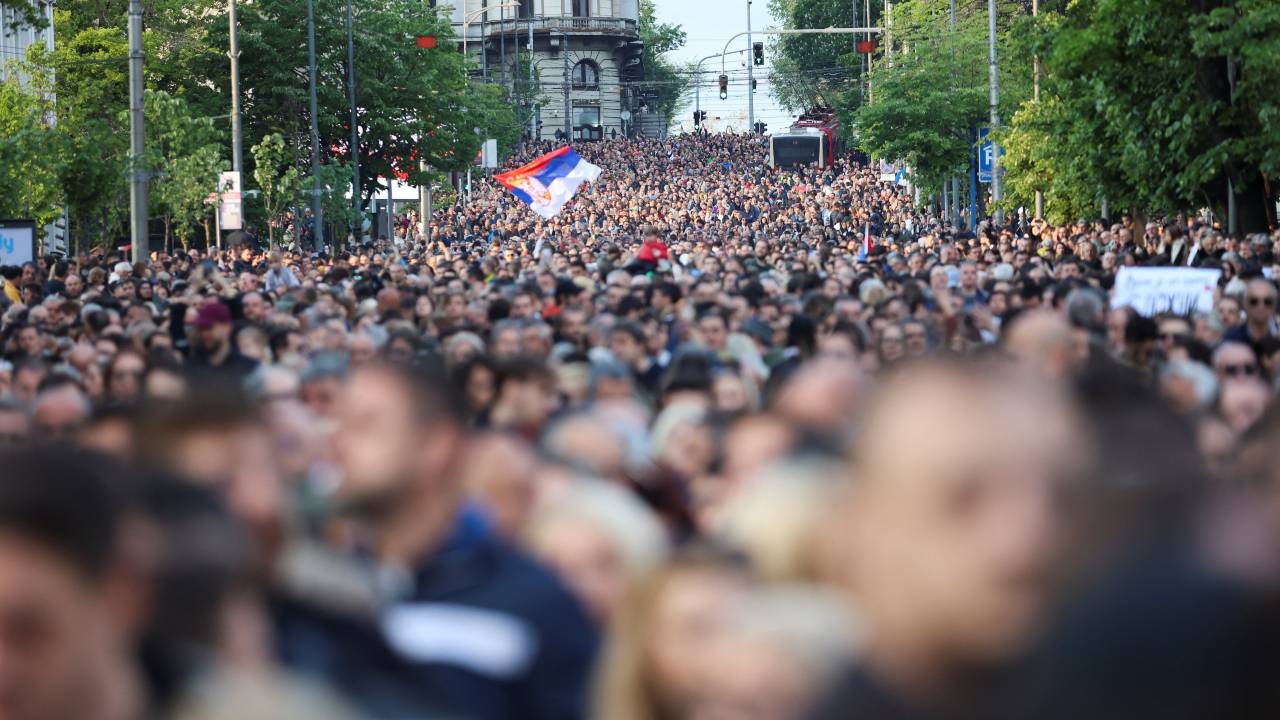
People in Podgorica light candles to pay tribute to victims of the Belgrade school mass shooting. /Stevo Vasiljevic/Reuters
People in Podgorica light candles to pay tribute to victims of the Belgrade school mass shooting. /Stevo Vasiljevic/Reuters
Serbians handed in more than 3,000 illegal weapons and gun parts in the first two days of a gun amnesty introduced after two mass shootings in which 17 people were killed.
President Aleksandar Vucic revealed the figures on Wednesday. He launched the amnesty on Monday, five days after a 13-year-old schoolboy with two handguns allegedly killed eight pupils and a security guard. Six other pupils and a teacher were wounded.
The suspect is custody and undergoing a psychological evaluation but cannot be held criminally responsible due to his young age. Police said he had confessed to the shooting.
Last Thursday, a man brandishing an assault rifle and a pistol killed eight and wounded 14 people in two villages in central Serbia. A 21-year-old suspect is now in custody.
READ MORE
Serbia mass shootings provoke horror – and debate
Serbia school shootings: Schoolboy who killed nine people 'planned attack carefully
Copenhagen shooter used 'legal gun' as investigation continues
Vucic said people so far surrendered over 3,000 pieces of weaponry, without specifying what kind. Tens of thousands of rounds of ammunition have also been handed in.
In previous gun amnesties launched over past two decades, people handed over banned military-grade arms, hunting weapons, handguns, and also barrels, locking mechanisms and other parts.
"That's good news, because there's so much less risk involved," Vucic said, speaking on television.
Under the terms of the amnesty, people are invited to hand over illegal weapons including military-grade, legally-owned arms they no longer want, ammunition, and ordnance, anonymously and without fear of prosecution.
Police departments urged people who owned explosives or ordnance not to carry them to police stations but instead to await trained personnel for their removal and disposal.
Earlier, Vucic announced additional checks of registered gun owners and shooting ranges, a greater police presence in schools, and changes to the criminal code that envision longer jail terms for weapons-related crimes.
Also on Wednesday, police said they detained the father of the suspect in the last week's shooting in central Serbia, the Tanjug news agency reported.

Thousands of attendees at Monday's 'Serbia against violence' rally in Belgrade. /Reuters/Zorana Jevtic.
Thousands of attendees at Monday's 'Serbia against violence' rally in Belgrade. /Reuters/Zorana Jevtic.
Serbia has a deeply entrenched gun culture and along with the rest of the Western Balkans is awash with military-grade weapons and ordnance in private hands after the wars of the 1990s that tore apart the former Yugoslavia.
Serbia has the highest level of gun ownership in Europe, with roughly 39 out of 100 people owning firearms, according to the Small Arms Survey research group.
Tens of thousands demonstrated in the Serbian capital Belgrade on Monday, with the protesters calling for the resignation of top officials and the curtailing of violence in the media, after the back-to-back shootings stunned the Balkan country.
The 'Serbia against violence' demonstration saw members from across the country's political divide come together.
On Sunday, the country's education minister stepped down, citing the "cataclysmic tragedy" caused by last week's school shooting in his resignation letter.
Following the rally, Vucic dismissed the protests during a live interview, calling it a "political" stunt.
Subscribe to Storyboard: A weekly newsletter bringing you the best of CGTN every Friday
Source(s): AFP
,Reuters